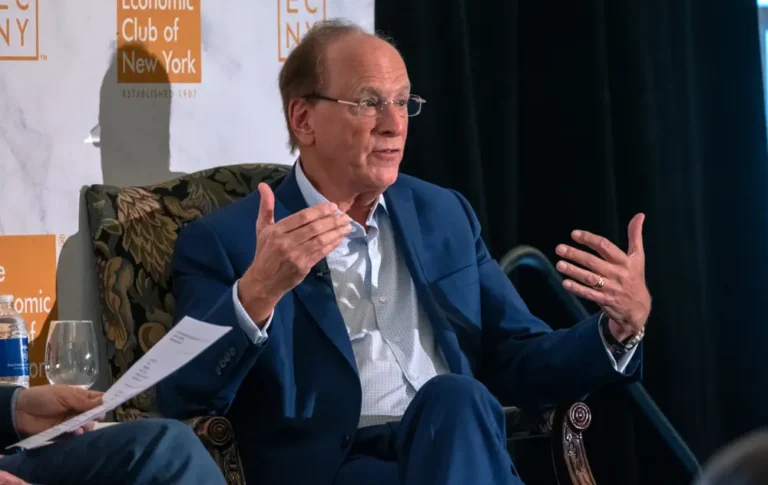Beware of ‘seismic shocks’ to the US economy and inflation if this specific election outcome occurs, according to a top mind at Bloomberg Economics

Donald Trump and Kamala Harris are in a tight race with potentially massive implications.
Election-year autumns are full of debates, including Tuesday night’s refreshingly respectful and civil vice-presidential showdown between Democrat Tim Walz and Republican JD Vance.
But there isn’t usually much disagreement about how to trade heading into elections.
Top market strategists and economists at the Bloomberg Volatility Forum on October 1 generally agreed on one point: Investors who don’t bet on the outcome of elections may be better off.
The race between Kamala Harris and Donald Trump will be too close to call, according to the latest polls and top political pundits, so market veterans said investors shouldn’t try to predict who will win.
And even if a crystal ball told traders who’d win the White House, it may not make them money, as Nancy Davis, the founder and chief investment officer at Quadratic Capital, noted.
“Market timing, to me, is something really, really hard to do — because even if you know the event outcome, you don’t necessarily know how liquidity is positioned or how much cash is on the sideline,” Davis said, citing the aftermath of Brexit as an example.
Still, investors should be mindful that one outcome — a Trump presidency that implements some of the toughest economic sanctions he campaigned on — could cripple growth and inflation, says Tom Orlik, the chief economist at Bloomberg Economics.
The market isn’t freaking out about the election, but protection may still make sense
Market volatility, as measured by the CBOE Volatility Index (VIX), has historically been elevated in the month before US elections, said Tanvir Sandhu, the chief global derivatives strategist at Bloomberg Intelligence. The VIX usually hovers around 25 in October, Sandhu noted. For context, the volatility gauge usually stays between 10 and 20 and only rarely approaches 30.
While the VIX is up 23% since late September, the so-called “fear index” is still under 20. That relatively muted volatility coincides with a strong stretch for US stocks. The S&P 500 is trading near record highs after a larger rate cut than many market participants expected.
Considering the looming election and its impossible-to-predict implications, it’s fair to wonder whether investors are being complacent. Traders who are feeling antsy may seek to hedge by buying puts or selling calls, especially since options premiums aren’t overly pricey.
Or, as Chris Murphy, the cohead of derivatives strategy at Susquehanna, put it, investors may want “upside protection” so they’re not caught offside if markets suddenly surge. Since volatility is in check, buying calls may pay off.
“We typically see a rally into year-end after the election,” Murphy said. “There are opportunities there to protect yourself” from such an upswing without going all in, he added, like buying cheap calls.
One election result may cause ‘seismic shocks’
Partisans are convinced that this election is the most important ever, as they always are. The market isn’t convinced, judging by where the VIX is trading just a month away from election day.
But Orlik of Bloomberg Economics disagrees. He foresees three plausible outcomes from next month’s elections, including a potentially dangerous one.
The status-quo outcome would be if Harris beats Trump and Congress remains divided. In that scenario, Orlik would expect continuity and similar economic policies as Joe Biden has had.
Another positive result for investors could be if Trump wins and his second term is similar to his first, where taxes and regulations are kept at a minimum, Orlik said. He pointed out that this type of Republican presidency has historically been one of the best environments for US stocks and the economy.
“Implicit in the sanguine anticipation of the election from the financial markets is the baseline view that either it be continuity with Kamala Harris, or it’ll be the small government,” Orlik said.
The third potential result is what has Orlik worried: a Trump term with “extreme” policies on tariffs that he’s floated and deportation of undocumented immigrants.
“I don’t think people are actually taking that possibility extremely seriously right now, but perhaps they should,” Orlik said. “Because these would be seismic shocks to the US economy — an absolutely enormous impact on growth, an absolutely enormous impact on inflation, and an enormous impact on Fed policy.”
Tariffs are import taxes designed to make domestic goods relatively attractive while raising money for the government that issues them. However, many economists and strategists hate them because they can make all goods more expensive while hurting economic growth.
Both Trump and Biden have implemented tariffs against rivals like China, but Orlik believes Trump’s latest proposals — which include a 60% tariff on Chinese goods and a 20% tariff on all other imports — would devastate the US economy and corporations.
“Let’s think about a world where Trump gets into power and poses a 60% tariff on China,” Orlik said. “Can anyone think of a company — perhaps a company with a fairly large weight in US equity indexes that wouldn’t be able to operate in a world of 60% US-China tariffs? I can think of a lot: Apple, Nvidia, Qualcomm — all of the companies big in the US equity indexes near record highs would basically not be able to operate their supply chains in a world of 60% US-China tariffs.”
Murphy isn’t as concerned as Orlik since Trump could always backtrack on tariffs, but he still believes that investors should be on their toes heading into November 5.
“Trump sees the stock market tanking, and then does he go, ‘I’m not doing this anymore because my stock market’s tanking,’ and he reverses very quickly,” Murphy said. “So you have to monetize those tail hedges potentially pretty quickly, but a tail hedge like that could — in theory — be something that catches people off guard.”






